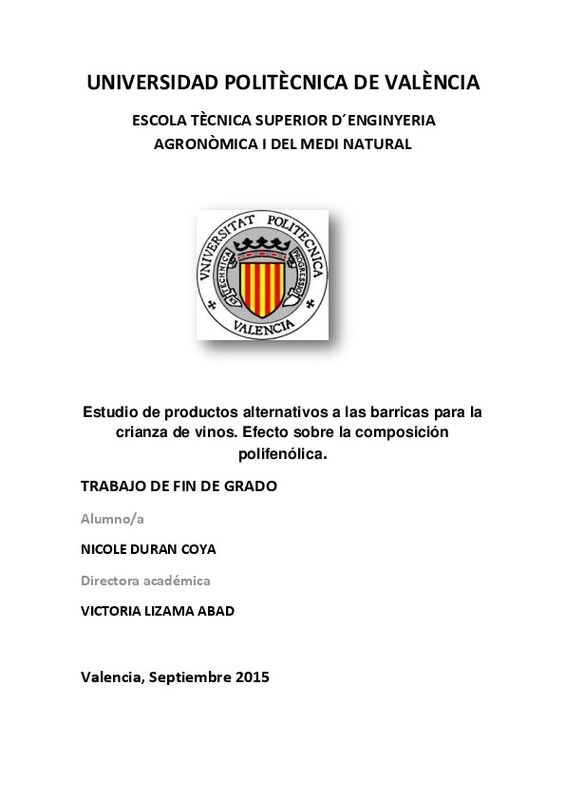JavaScript is disabled for your browser. Some features of this site may not work without it.
Buscar en RiuNet
Listar
Mi cuenta
Estadísticas
Ayuda RiuNet
Admin. UPV
Estudio de productos alternativos a las barricas para la crianza de vinos. Efecto sobre la composición polifenólica
Mostrar el registro completo del ítem
Durán Coya, NM. (2015). Estudio de productos alternativos a las barricas para la crianza de vinos. Efecto sobre la composición polifenólica. http://hdl.handle.net/10251/55618.
Por favor, use este identificador para citar o enlazar este ítem: http://hdl.handle.net/10251/55618
Ficheros en el ítem
Metadatos del ítem
| Título: | Estudio de productos alternativos a las barricas para la crianza de vinos. Efecto sobre la composición polifenólica | |||
| Autor: | Durán Coya, Nicole Macarena | |||
| Director(es): | ||||
| Entidad UPV: |
|
|||
| Fecha acto/lectura: |
|
|||
| Resumen: |
[ES] El presente trabajo, trata sobre el estudio de virutas de roble utilizadas el envejecimiento de los vinos. Para ello, inicialmente se realizó un análisis de la composición de virutas, poniendo en práctica distintas ...[+]
[EN] The wine industry that is always looking for improve due due to high competition. It is
therefore important to study alternative methods to traditional help us get a quality
product and a good price. In this proyect ...[+]
|
|||
| Palabras clave: |
|
|||
| Derechos de uso: | Reserva de todos los derechos | |||
| Editorial: |
|
|||
| Titulación: |
|
|||
| Tipo: |
|
recommendations
Este ítem aparece en la(s) siguiente(s) colección(ones)
-
ETSIAMN - Trabajos académicos [3541]
Escuela Técnica Superior de Ingeniería Agronómica y del Medio Natural







